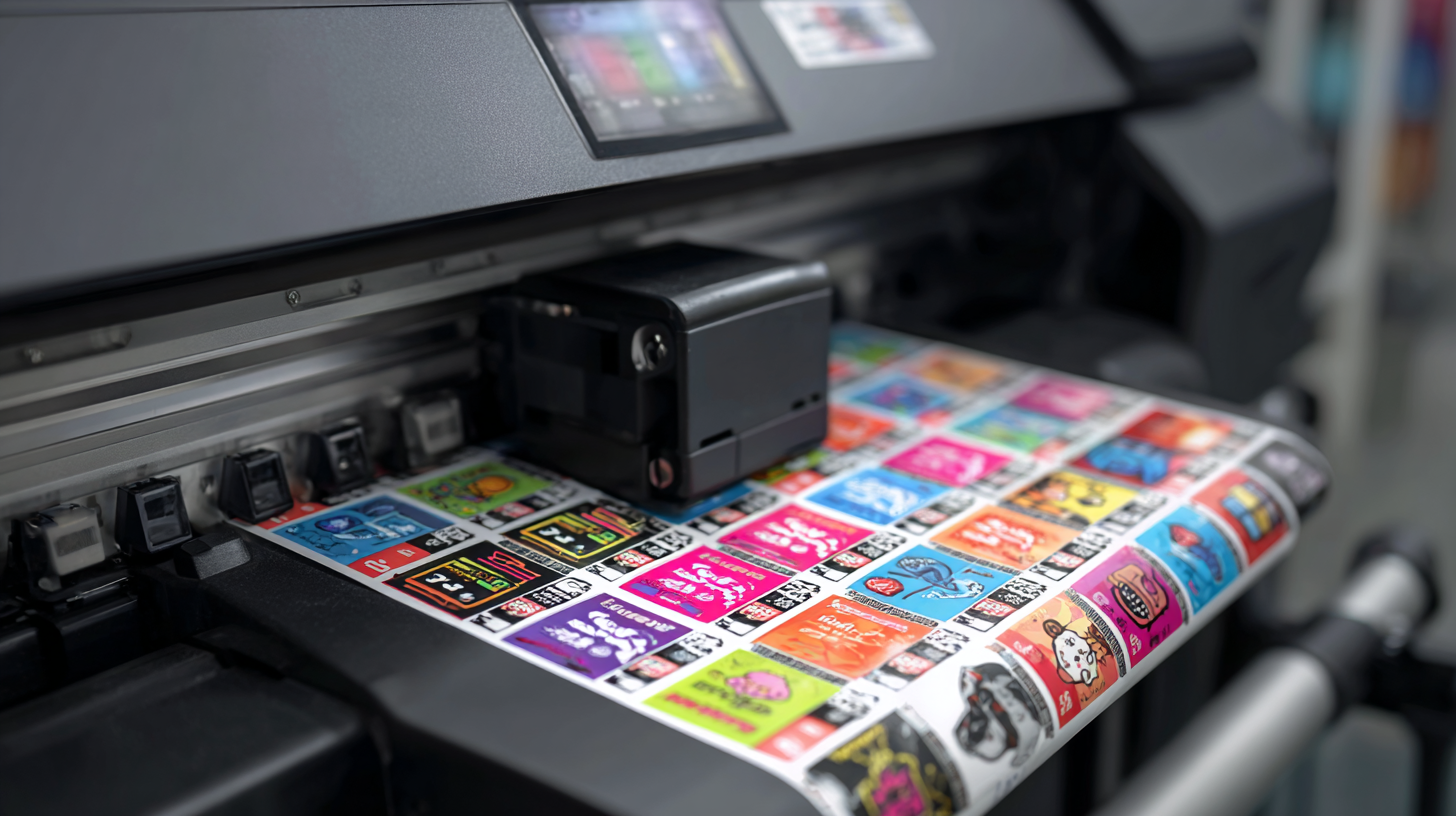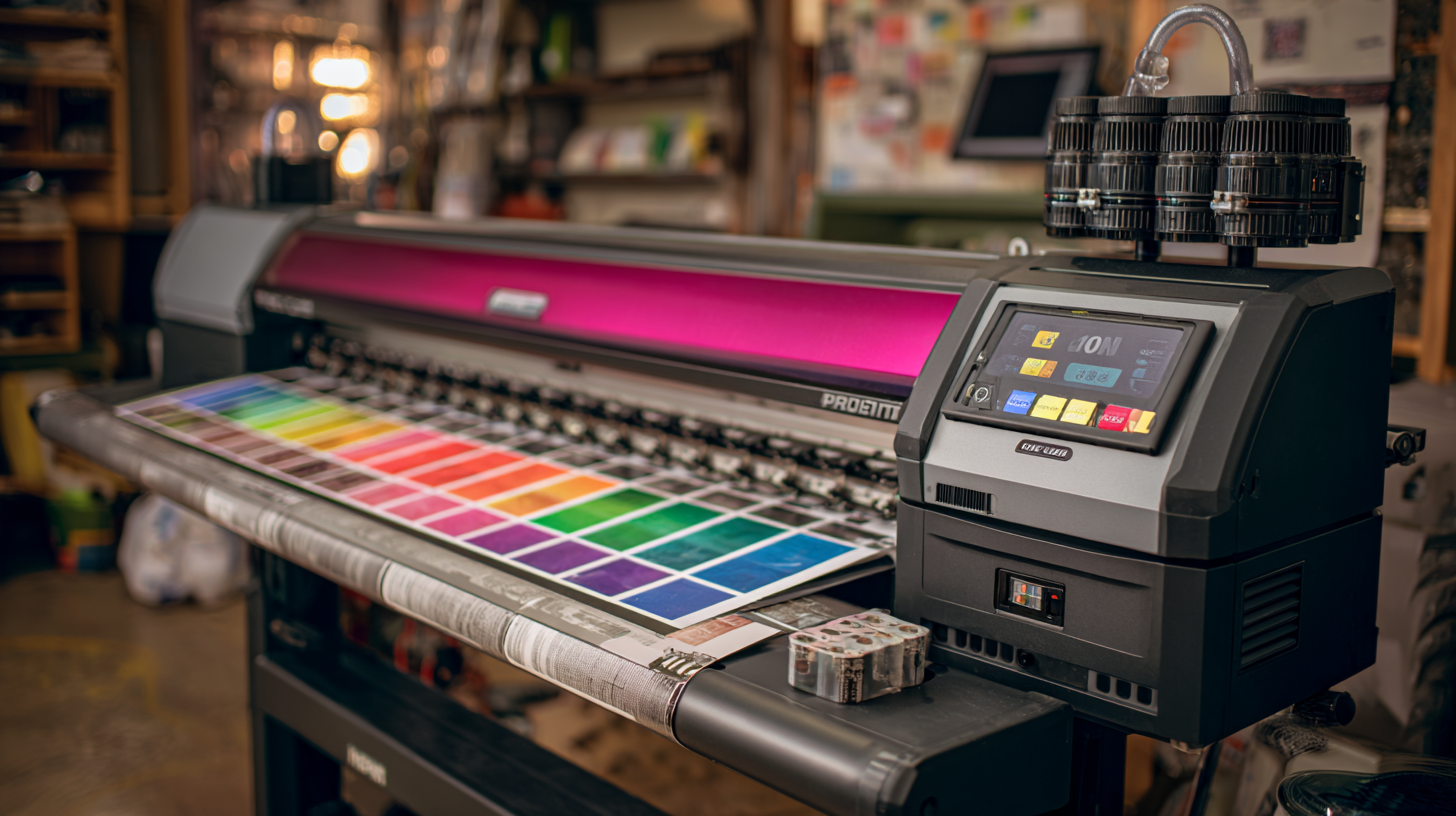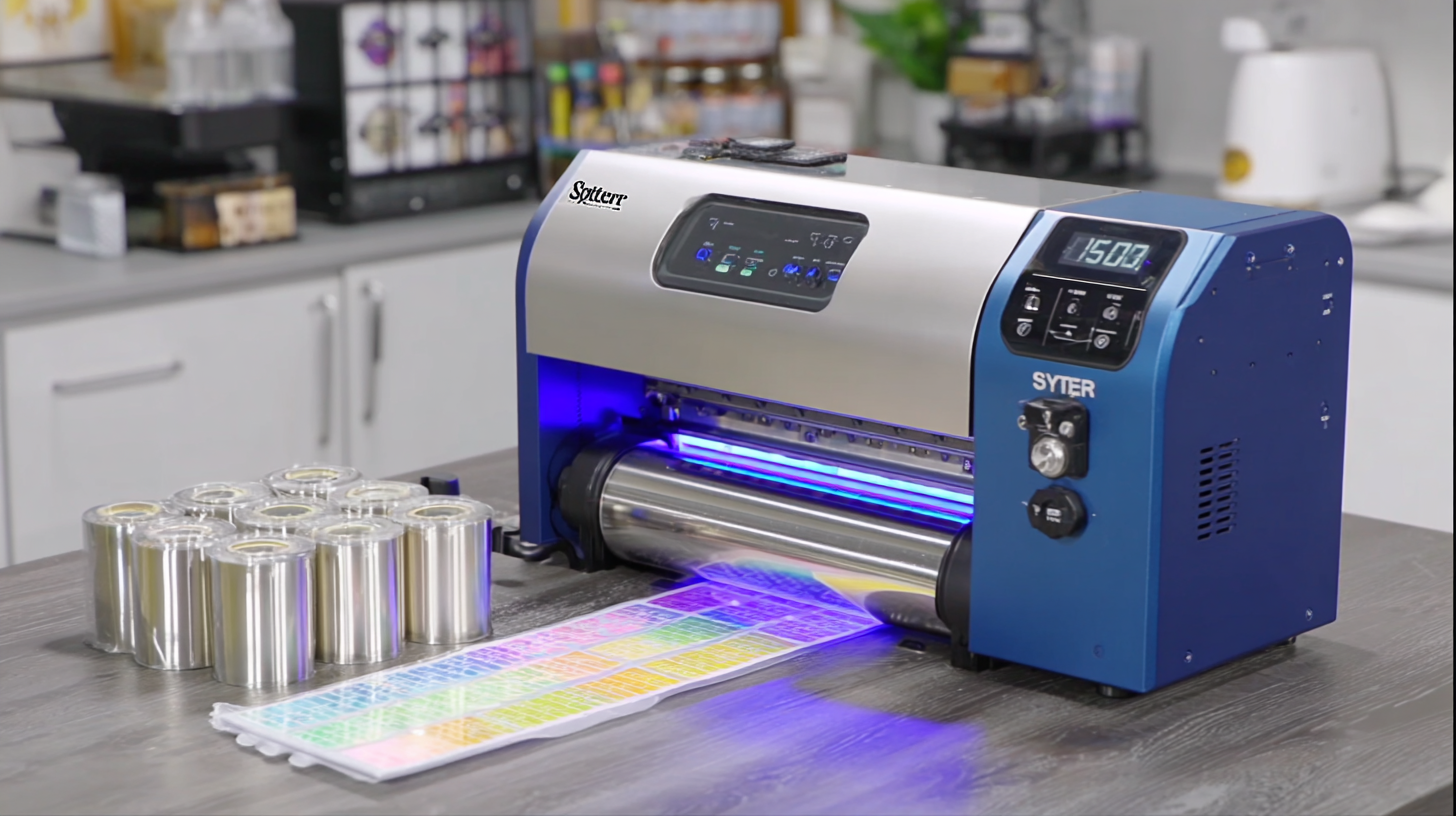In 2025, as the demand for personalized and creative labeling continues to surge, choosing the best sticker printer has become a crucial decision for both businesses and hobbyists alike. With advancements in technology and the ever-evolving landscape of printing options, it's essential to stay informed about industry trends that can influence your purchase. This blog will guide you through a comprehensive checklist of key considerations when selecting a sticker printer.

From understanding the different printing technologies available to evaluating print quality, speed, and cost-effectiveness, we aim to equip you with the knowledge needed to make an informed choice. Whether you're a small business looking to enhance your branding or an artistic individual wanting to bring your designs to life, exploring these factors will help you find the perfect sticker printer that meets your specific needs.
The sticker printing industry has undergone remarkable transformations, influenced by advancements in technology and increasing consumer demands. In 2025, the rise of digital printing technology has significantly improved efficiency and customization options. According to a recent report from Smithers Pira, the digital label printing market is projected to grow at a CAGR of 7.6%, reaching USD 22.3 billion by 2026. This growth is largely driven by the demand for shorter runs and personalized designs, allowing businesses to cater to niche markets effectively.
Furthermore, sustainability has become a pivotal focus in the evolution of sticker printing. With consumers increasingly prioritizing eco-friendly products, 70% of sticker manufacturers now offer recyclable or biodegradable materials. This shift is complemented by innovations in water-based inks, which have seen a 15% adoption rate among printers in the past two years. As these trends continue to shape the industry landscape, it's essential for businesses to stay informed and adapt their printing strategies to meet the evolving expectations of their customers. The intersection of technology and sustainability will play a critical role in defining the future of sticker printing.

When selecting a sticker printer in 2025, understanding the key features is crucial to making the best choice for your needs. One of the most important aspects is print quality. Look for printers that offer high-resolution printing to ensure that your stickers have vibrant colors and sharp details. A printer with dye-sublimation technology, for instance, can deliver outstanding quality that stands out in the competitive market.

Another significant feature to consider is the type of connectivity options available. Modern sticker printers often come with wireless capabilities, allowing for easy printing from smartphones, tablets, or laptops. Additionally, the size and format of the stickers you want to produce should influence your choice. Whether you need compact stickers or larger formats for promotional materials, select a printer that accommodates various media sizes without compromising quality. Lastly, keep an eye on the ink system; models that utilize refillable cartridges or innovative ink solutions can save you money and reduce environmental waste, making them smart choices for sustainable printing.
When selecting a sticker printer, it's essential to understand the common problems associated with different printer types.
Inkjet printers, while offering vibrant colors and detailed images, often suffer from issues like ink smudging and the tendency to produce stickers that fade over time. This can be particularly problematic for businesses aiming for longevity in their branding materials.
For those seeking durability, laser printers may seem like a solution; however, they can struggle with precise color matching and may not handle glossy materials as effectively as their inkjet counterparts.
To mitigate these challenges, consider investing in high-quality ink and paper tailored for your chosen printer type. It's also advisable to regularly perform maintenance checks to keep the printer in optimal condition. Additionally, always conduct a test print before executing a large batch—this allows you to identify any production issues in advance.
When exploring specialized sticker printers, beware of models that are limited in media size or functionality. Some printers may only support specific types of sticker materials, which could restrict your creative options. A versatile printer that accommodates different materials and sizes can significantly enhance your end product quality.
When selecting a sticker printer for 2025, it's crucial to consider the current industry trends that affect these choices. As per a recent Market Research Future report, the global market for sticker printing was valued at approximately $5 billion in 2023, with an anticipated growth rate of 8.5% CAGR through 2025. This surge is largely driven by the rising demand for customization and personalized products, a trend that will dictate the features and capabilities that consumers will seek in sticker printers.
Moreover, the advent of eco-friendly printing solutions is becoming a significant factor. According to Smithers PIRA, sustainable printing methods are expected to rise by 20% in the next two years as brands prioritize sustainability in their operations. This shift not only influences the choice of printer but also the type of materials used, prompting manufacturers to innovate and offer printers compatible with biodegradable and recyclable label materials. Keeping an eye on these trends will enable businesses to invest in sticker printers that not only meet current demands but are also future-proofed against evolving industry standards.
| Feature | 2025 Trend | Importance Level (1-5) | Reason for Importance |
|---|---|---|---|
| Print Quality | High resolution printing | 5 | Increasing demand for high-quality visuals. |
| Speed | Faster printing capabilities | 4 | Quicker turnaround times for customers. |
| Material Compatibility | Diverse media options | 4 | Versatility in sticker types and applications. |
| Sustainability | Eco-friendly printing options | 5 | Growing awareness of environmental impact. |
| Software Compatibility | Integration with design software | 4 | Streamlining the design-to-print process. |
| Cost of Ownership | Affordable maintenance and supplies | 5 | Impact on long-term profitability. |
As we enter 2025, the market for sticker printers has become increasingly competitive, making cost-effectiveness a critical factor for businesses and hobbyists alike. When comparing leading sticker printers, it's essential to evaluate not only the initial purchase price but also the ongoing costs, such as ink, materials, and maintenance. High-quality printers may have a higher upfront cost, but they often deliver better long-term savings through efficiency and durability. For example, some models offer bulk ink options or use refillable cartridges, significantly reducing per-sticker printing costs.
Additionally, features that enhance usability and versatility can impact overall cost-effectiveness. Printers that can handle various media types, such as vinyl and paper, enable users to expand their product offerings without investing in multiple machines. Moreover, factors like printing speed and resolution should be taken into account; faster printers may allow for quicker turnaround times, thereby increasing productivity and potentially driving higher revenue. By weighing these considerations, users can make informed decisions that align with both their budget and their creative needs.
